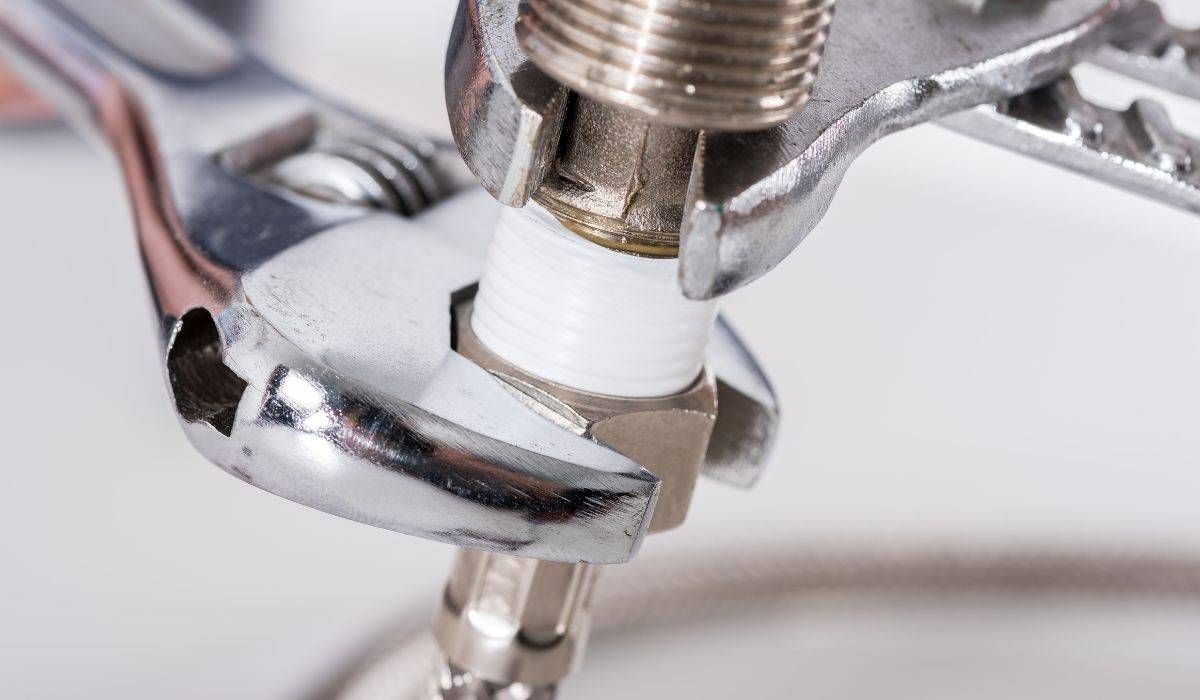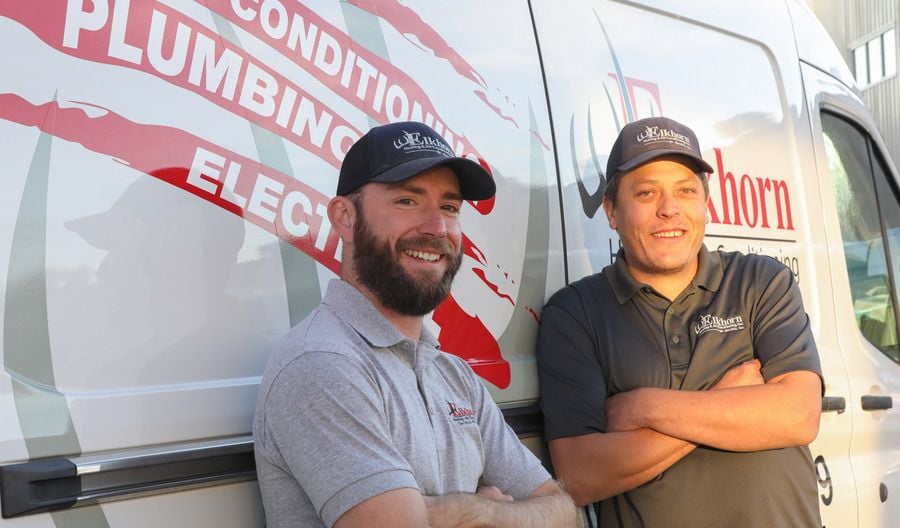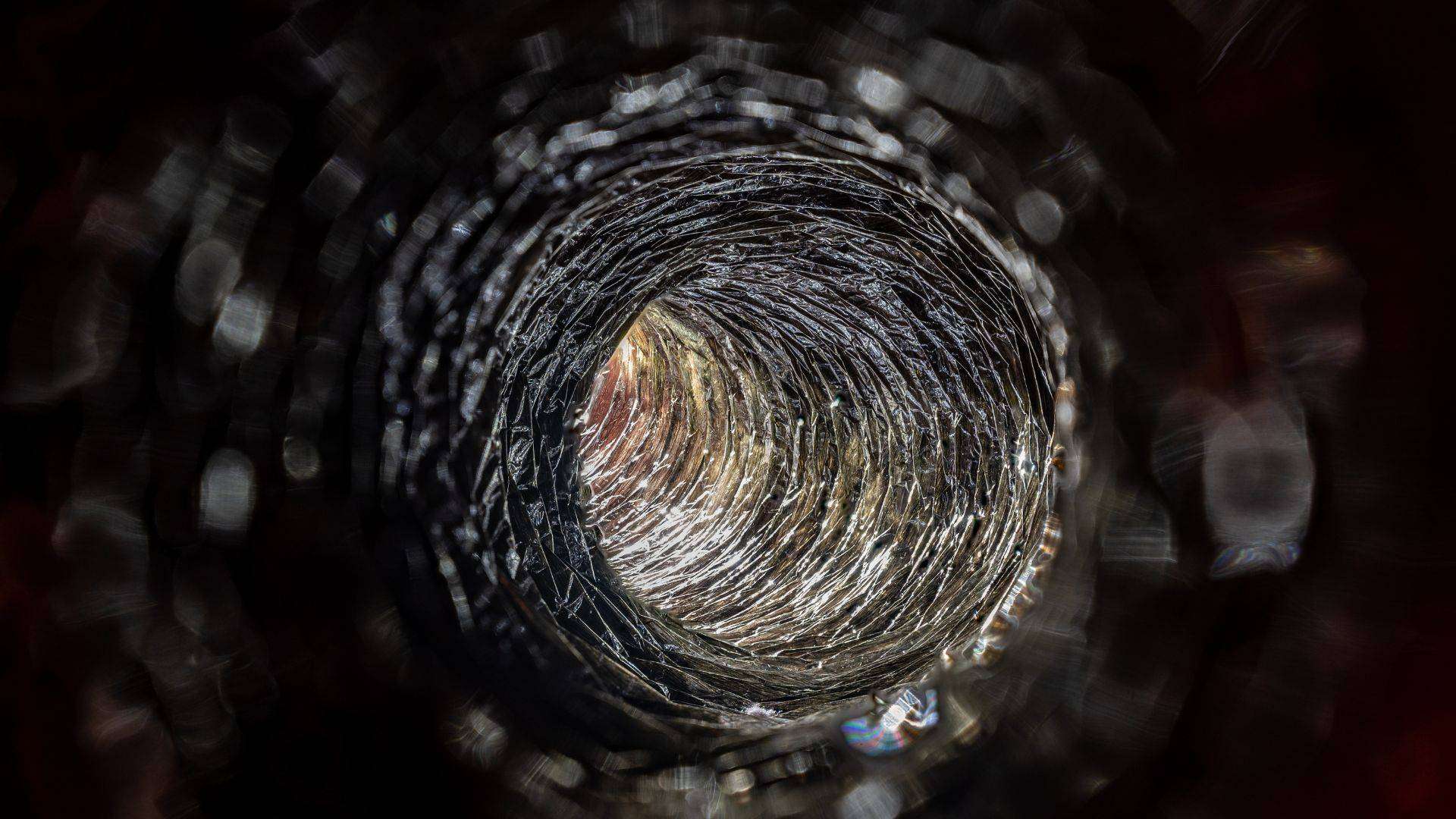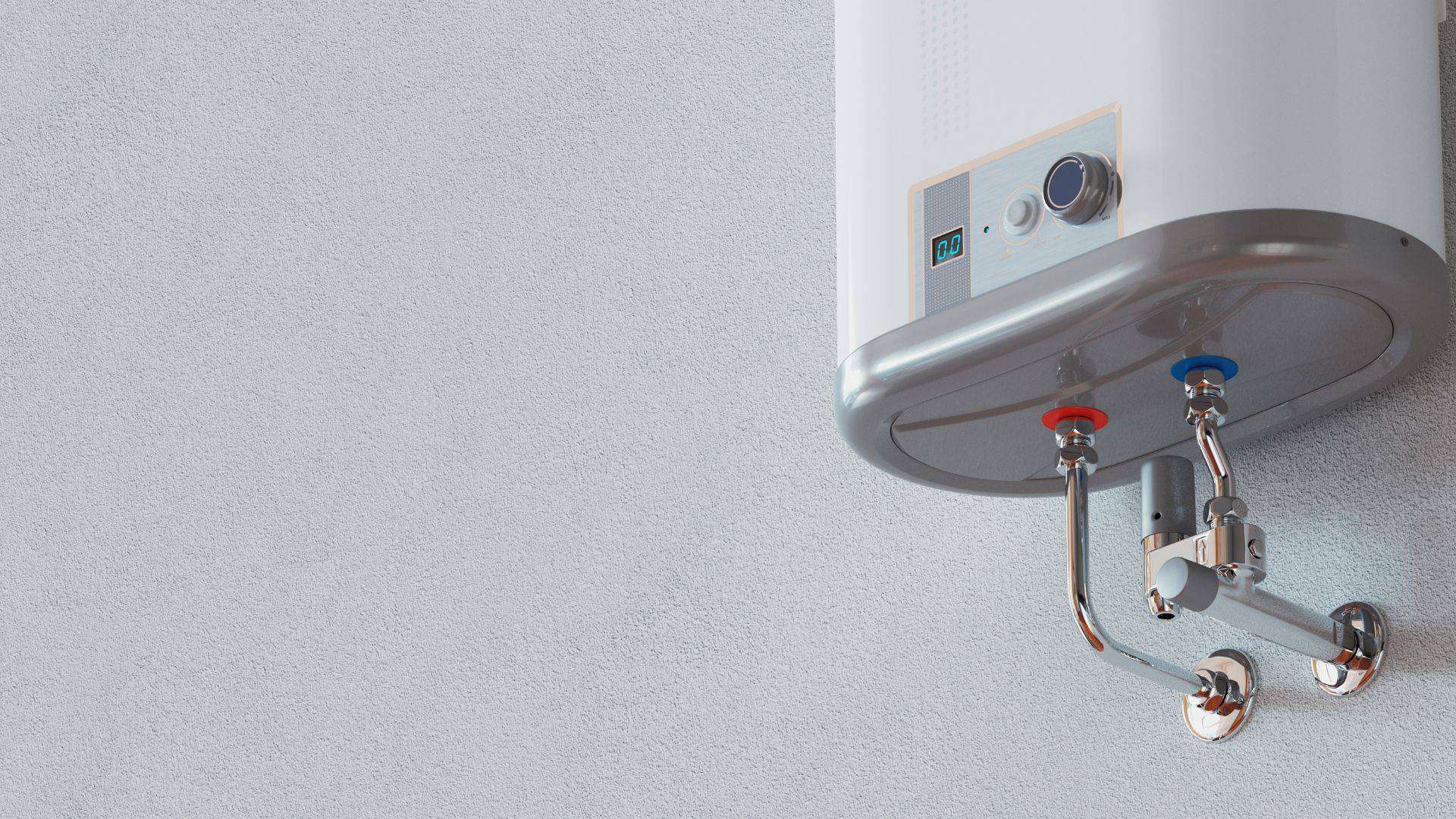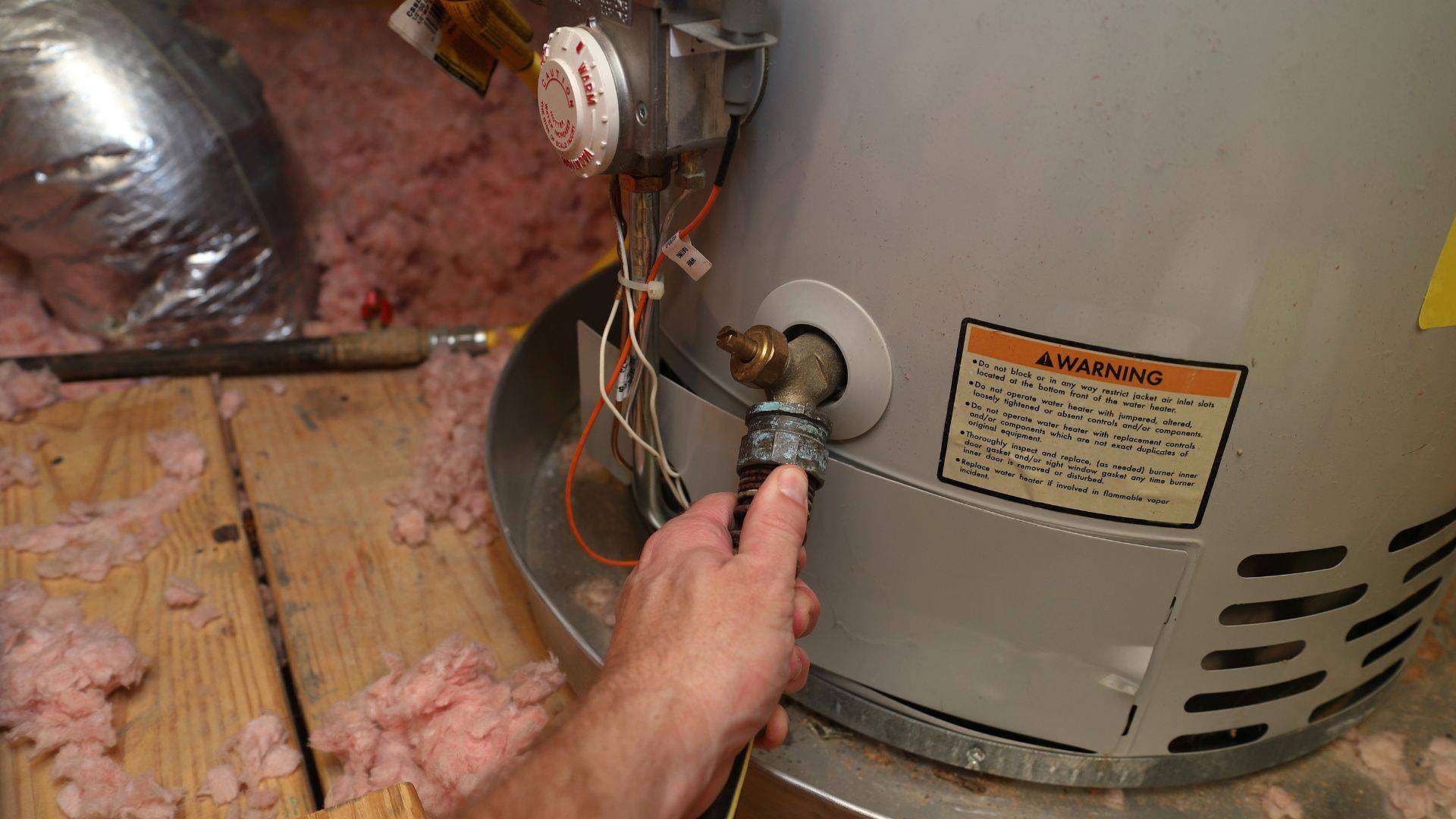7 Essential Plumbing Steps to Take Before the First Freeze (and Why They Save You Thousands)
A single frozen pipe can quickly result in thousands of dollars in damage if it isn’t caught quickly. As a Denver and Littleton homeowner, it’s essential to prepare your indoor and outdoor plumbing systems for winter weather. From insulating spigots to keeping your heat on, there are a few things you can do to prevent frozen pipes.
At Elkhorn Heating, Air Conditioning, Plumbing & Electrical, we offer the trusted services and local knowledge you need to keep your plumbing system working at its best. Whether you want to schedule routine maintenance or need to get 24/7 emergency services, our team is here to help.
Why Pre-Freeze Plumbing Prep Matters
While liquid water flows inside your pipes without a problem, it doesn’t stay the same size as it freezes. As a liquid, the water molecules move frequently and remain close together. As they freeze, they move apart and form a hexagonal lattice. This takes up added space, which is why frozen water expands.
Unfortunately, this means that frozen ice can place added pressure on the pipes and cause them to burst. Besides damaging your plumbing systems, this can lead to a basement flood, damaged walls, and mold growth.
When it comes to burst pipes, the typical repair can cost between $200 and $3,000. This estimate includes the cost of materials, emergency service fees, travel expenses, and labor. However, it doesn’t include the expenses involved in repairing your home. Hundreds of gallons of wasted water can flood your walls and floors, resulting in significant damage to tiles, wood flooring, drywall, and other home materials.
The good news is that there are easy steps you can take to prevent this type of damage from happening. By carrying out your pre-freeze preparations, you can avoid costly repairs this winter.
Step 1: Inspect and Drain Exterior Water Sources
Outdoor hoses, spigots, and hose bibs are especially vulnerable to freezing temperatures. Unlike the water in your home, these plumbing components aren’t in a heated environment. Additionally, most homes don’t use hoses during the winter, so the lack of moving water increases the likelihood of pipes freezing.
To protect your outdoor water sources, start by disconnecting the hose from the faucet. You should allow the hose to drain completely so that it doesn’t freeze and become damaged during the winter.
If your home has one, you should turn off the interior valve that leads to the exterior faucet. Then, you can turn on the outdoor faucet for a few minutes to flush any remaining water. Afterward, it can be turned off for the rest of the winter.
While this isn’t an option for every home, some plumbing systems are designed so that you can leave the outdoor spigot open. If this is the case, leaving it open will give water space to expand without bursting your pipes.
Elkhorn Tip: Many older homes weren’t designed with an interior shut-off valve for outdoor faucets. If your home doesn’t have this valve, it’s time to consider getting one. Reach out to our team for help with all of your outdoor plumbing projects.
Step 2: Insulate Vulnerable Pipes and Fixtures Inside the Home
Before temperatures drop, local homeowners should insulate vulnerable pipes and fixtures. Typically, the most at-risk plumbing components are found in unheated spaces, such as attics, exterior walls, basements, and crawlspaces. If the pipe is accessible, it should be insulated to prevent freezing.
Depending on the pipe type and the materials you have available, you can insulate the pipe in different ways. Foam pipe sleeves, insulation blankets, and heat tape are effective options. Whenever possible, it’s always better to insulate the entire room if you can.
To get started on your insulation project, use the following steps.
- Identify potential cold spots by paying attention to where drafts occur in your home. You can also look for areas where pipes run near the exterior walls.
- Turn off the line using the shut-off valve and drain it if needed.
- Slide on the insulation. If you are using heat tape, you can wrap it around the pipes.
- Consider insulating storage rooms, attics, and crawlspaces to help your plumbing systems remain warmer. You may also want to add a heat source.
During cold snaps, make sure to leave your cabinet doors open underneath your sinks. This allows warm air to circulate and can prevent freezing.
Elkhorn Tip: Our plumbers can inspect your plumbing layout to help you determine high-risk areas that might freeze up. Then, we can recommend the best course of action for preventing frozen pipes.
Step 3: Seal and Protect Areas Where Pipes Penetrate Exterior Walls
When a pipe, water line, or hose penetrates the outer wall, there is often a gap around it. This allows cold air to infiltrate your home and increases the odds that your pipes will freeze.
To avoid this issue, start by inspecting your pipes where they penetrate exterior walls. If there are gaps, use foam or caulk to seal around them.
Then, check your outdoor shut-off valves and any hose bibs that are on your exterior walls. These components should also have insulation installed around them. You can also prevent freezing by upgrading to frost-free models.
Elkhorn Tip: If you are uncertain about the most effective way to prepare your home for winter, give us a call. We can recommend the best frost-free spigots and foam insulation options for your home.
Step 4: Shut off and Drain Your Seasonal and Secondary Systems
Many homes have irrigation systems, pool fill lines, exterior washing machine hookups, outdoor utility sinks, and other water systems that are only used for part of the year. Rather than risk the possibility of these unused lines freezing, you should prepare them for winter by shutting them off and draining them.
To begin with, start by locating the shut-off valve for that line. Once you have shut off the flow of water, you can drain the line. If it is an irrigation line, you should blow it out using air. For other lines, you can leave the drain plug open. This allows extra space for any remaining water to expand if it freezes. All valves should be labeled so that you can easily turn everything back on in the springtime.
Elkhorn Tip: To make the winterization process easier, create a winter shutdown list of secondary water systems on your property. If you need help, our team can help you audit your property and create a shutdown list.
Step 5: Monitor and Adjust Your Home’s Internal Water/Heat Balance
Your home’s internal temperature plays a major role in whether your pipes freeze. Even when you are away, you still need to maintain your home’s temperature to protect your pipes. We recommend keeping your thermostat set at 55°F or higher.
To protect your pipes, you should open cabinet doors whenever temperatures are forecast to dip below freezing. This allows warm air to circulate around the pipes, so the water doesn’t get as cold.
You should also pay attention to your walls and ceilings for unusual changes. Any indication of leaks or moisture means that there may be a potential pipe issue that should be addressed before freezing weather arrives. If there is a hairline crack in the pipe that is causing the leak, it increases the likelihood that the damaged pipe will burst if it freezes.
Elkhorn Tip: Our team can help you avoid major plumbing disasters through a preventive plumbing inspection. During this inspection, we’ll conduct routine maintenance and check for plumbing problems. If we notice potential issues, we can immediately recommend a solution.
Step 6: Know Where Your Shut-off Valves Are and Label Them
Shut-off valves are essential in case a plumbing emergency happens. There are three main kinds of shut-off valves.
- Main Shut-off Valves: You have a main shut-off valve that can turn the water supply off for your entire house.
- Branch Shut-off Valves: There are also branch shut-off valves that link to specific lines.
- Exterior Shut-off Valves: Your exterior shut-off valves connect to lines that run outside of your house.
As a homeowner, you need to be aware of where these shut-off valves are. If a pipe freezes or bursts, you need to be able to quickly reach the shut-off valve so that you can turn off the flow of water.
In an emergency, you don’t have time to test each shut-off valve or look at your home’s blueprint. To save time, you should have each valve clearly labeled with what it is and which fixtures it can turn off.
Elkhorn Tip: During our maintenance visit, we can review the layout of your home’s valves. We’ll leave behind a diagram of the valves, so you can easily determine where each one is located.
Step 7: Schedule a Pre-Winter Plumbing Inspection
Even with the best DIY maintenance tips, plumbing malfunctions can still occur. Over time, mineral buildup can develop, parts can wear down, and fixtures can start to leak. By having a professional inspection, you can diagnose these issues before they cause major problems.
When freezing temperatures arrive, a few underlying problems increase the likelihood of frozen pipes. Worn pipe insulation, slow leaks, and corrosion are all factors in pipes freezing.
Whether you need to replace old insulation or fix a leak, prevention is always much cheaper than dealing with an emergency fix. More importantly, timely repairs ensure your family is comfortable and has continued access to clean water.
Elkhorn Tip: To prepare your home for cooler weather, schedule your next plumbing inspection. During the appointment, our certified plumbers will inspect your system for potential problems. We will test shut-offs and check the insulation, so you can enjoy better peace of mind. After we’re finished, we’ll give you a full report of our findings and recommendations.
What To Do If a Pipe Freezes Anyway
Littleton, Denver, and the surrounding areas can get incredibly cold in the wintertime. Even with the best precautions, pipes can still become frozen. If this occurs, don’t panic. With the right response, you can avoid costly repairs and minimize the damage.
- Avoid Open Flames: You should never use an open flame to try to warm up the pipe. This can damage the pipe and start a fire.
- Switch Off the Water: To avoid unnecessary damage, you should immediately go to the main shut-off valve and turn it off. If the valve is switched off, there is a limit to how much water can escape into your home.
- Warm the Pipe: Starting at the faucet and working your way backward to the frozen area, gently warm the pipe. This is generally done with a hair dryer or an electric heating pad. Continue warming the pipe until it unfreezes.
- Call a Plumber: If you are unsure about what to do, don’t be afraid to reach out for extra help. Additionally, you should immediately call our plumbers for emergency services if you see any signs of a burst pipe.
- Prevent Future Issues: After treating a frozen pipe, the next step is preventing it from happening again in the future. Insulating around pipes, opening cabinets, and draining outdoor pipes can help. If this is a recurring issue, you may also need to schedule a professional inspection to discover and remedy the underlying problem.
Unless the weather warms up, frozen pipes won’t warm up on their own. To prevent costly repairs and a lot of stress, this type of issue needs to be dealt with right away. If you are experiencing frozen pipes, give our top-rated plumbers a call.
Prevent Frozen Pipes This Winter
As a Littleton and Denver resident, it’s important to be proactive about preparing your plumbing systems for winter. With the right maintenance and winterization tips, you can avoid major headaches in the future. Draining outside pipes, locating your shut-off valves, insulating your pipes, and scheduling an annual inspection are just a few of the things you can do to keep your system operating at its best.
Ready to protect your home from freezing temperatures? Reach out to Elkhorn for help. Our trusted team offers local insights and timely service calls, so you can head into the winter season with confidence.
Learn more by scheduling a plumbing maintenance appointment today.
